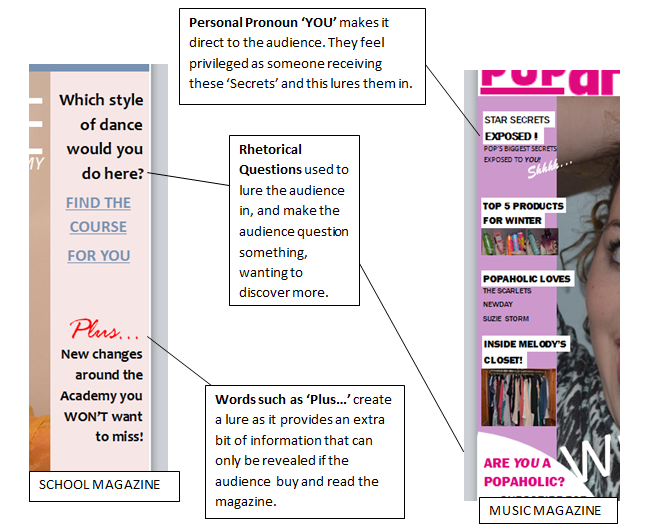I also used my iPhone, to take some practice photographs. I did this in school, against a white background so that I could get an idea of the types of poses and shots I wanted my model to do, for the main image on my cover. For example I tried out some high angle shots, as well as an eye level shot which I think worked really well as it would mean the direct address towards the audience would come across, and the message of my pop magazine would be clear to the target audience.
This meant that the mise-en-scene of the photographs were quite bare, however in my real photos the setting would be improved, by using a clear white background.
This is something I did for my final product that I had not done for my preliminary task. I think by taking some practice photographs helped me a lot to plan my shots more, therefore I feel this helped me develop further in my photography.
This meant that the mise-en-scene of the photographs were quite bare, however in my real photos the setting would be improved, by using a clear white background.
This is something I did for my final product that I had not done for my preliminary task. I think by taking some practice photographs helped me a lot to plan my shots more, therefore I feel this helped me develop further in my photography.


The photos above were taken on my iPhone, as practice photography.
By trying different angles such as a high-angle shot, and an eye-level shot, it helped me decide which I prefer for my magazine.
I ended up using the same pose that is used on the top photo, because I thought it was appropriate for my main story and my genre of 'pop', as it is a common theme for pop magazines to use a 'posed' shot on their front cover, to attract the audience's attention, as well as using a fun and exciting pose like the one I have chosen, to suit the style that interests the young, fresh, teenage audience of pop.
When I began taking my final photographs, I used my Nikon camera, which was great as it creates a clear, sharp, colourful image without blurring or red-eye. It also made my photographs look much more professional than my practice photos that I took on my phone.












